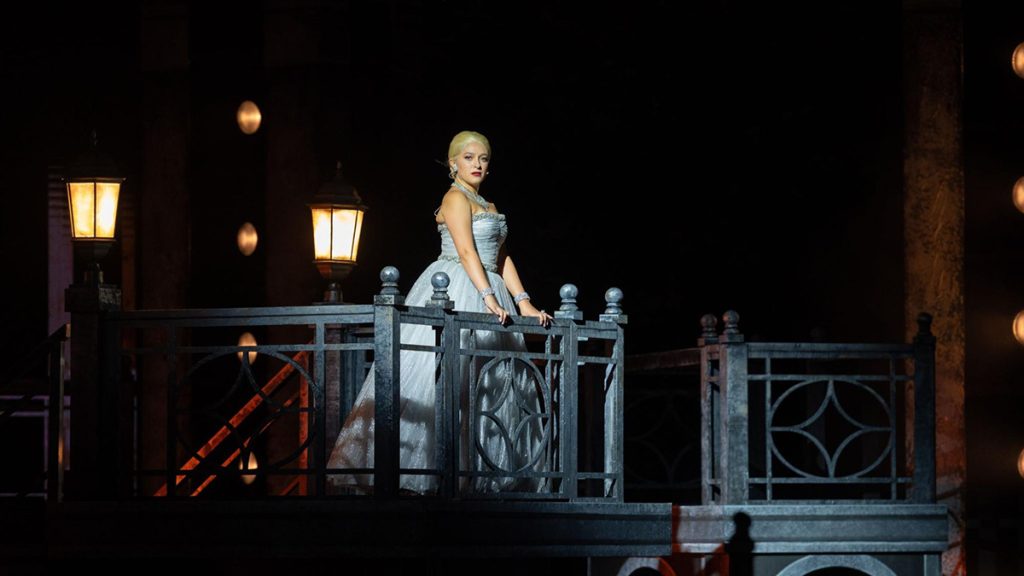
Katerina McCrimmon starred as Argentine social climber Eva Peron in The MUNY’s July production of “Evita.” Photo: Phillip Hamer
Funding arts journalism’s future
Building a new repository and nonprofit for arts journalism
There has never been a better (or worse?) time for arts philanthropists to consider subsidizing arts journalism. That’s why I’m grateful for a chance to spend my yearlong residential fellowship at RJI, serving as a connector and brainstorming around the issues of funding and arts journalism. These are the two pieces of this project I will accomplish to launch by next june:
- Create an online repository of resources for journalists and newsrooms that want to pursue nontraditional lines of funding for arts coverage. We’re developing a database of state and local grants, playbooks and templates for newsrooms pursuing arts philanthropy, including case studies based on branded events and ethical guidance navigating conflicts of interests.
- Launch a nonprofit that can provide project-based funding to arts journalists, using a model similar to the Economic Hardship Reporting Project and covering the costs of reporting. (Unfortunately, even freelancers for major outlets like The Washington Post and New York Times are not reimbursed for travel expenses.)
To accomplish this, I will consult with news organizations that want to pursue any or all of the above, and help us make these resources as effective as possible. Already, I’ve heard from many arts leaders, journalists and Mizzou faculty who are excited about collaborating, and that only makes me more grateful and excited.
Why this matters to journalism’s future
More than a third of people who attend performing arts events in the United States do so because they heard about the event through traditional print or broadcast media.
That factoid, taken from a forthcoming National Endowment for the Arts report on Public Participation in the Arts, is where I suggest cultural journalists start a conversation about why their work matters: Because arts journalism puts eyes on art and butts in seats.
That 36% stat cannot – and should not – be the raison d’etre for arts journalism. We are not the advertising department. My two decades on the arts beat has often included writing less-than-positive reviews and stories that provide accountability for wrongdoing in the cultural sector.
But when it comes to asking arts philanthropists to also fund arts journalism, the base argument has to be: Do you want people to experience the work that you’ve funded? Then the data says you should help journalists cover it, and innovate when we do.
The NEA’s 2022 public participation survey, which relied on data collected in early pre-pandemic 2020, also found that 58% of respondents first learned about a theater, dance or classical music happening from “online sources.” The NEA didn’t define what those “online sources” were, however. For the sake of argument, let’s assume that ¼ of those people saw “online sources” produced by a media outlet. That means the total percentage who learn about an arts event via arts journalism is over 50%.
That’s kind of astounding. Astoundingly good if you are a journalist who wakes up everyday wanting people to experience the art.
Yet since the NEA collected that data, more than 50,000 media workers have lost their jobs. In communities that are lucky, staff journalists are replaced by freelancers, but those freelancers are often asked to work for less than living wages. In-person arts participation also has yet to reach pre-pandemic levels. There is, it would seem, at least a partial correlation.
While I miss my adopted hometown of Washington, D.C., there is something to be said for leaving the nation’s capital at this moment for a university that produces so many capable American journalists, plus, as one university staffer recently said to me, Columbia “is cooler than it has any right to be.” Since my mid-June arrival in Missouri, I’ve attended three chamber music concerts (all featuring new music!), watched a National Theatre screening at RagTag Cinema and taken ballet at Mareck Dance. Plus I made my maiden trip to The MUNY, where I saw Katerina McCrimmon star in director Josh Rhodes’ “Evita.” Um, wow.
“If ever I go too far, it’s because of the things you are, beautiful town,” Ava sings, shortly after arriving in Buenos Aires. As anyone who has caught me singing showtunes in the Mizzou stairwells can attest, that’s what I bring to my project.
Cite this article
Ritzel, Rebecca (2025, Aug. 18). Funding arts journalism’s future. Reynolds Journalism Institute. Retrieved from: https://rjionline.org/news/funding-arts-journalisms-future/
